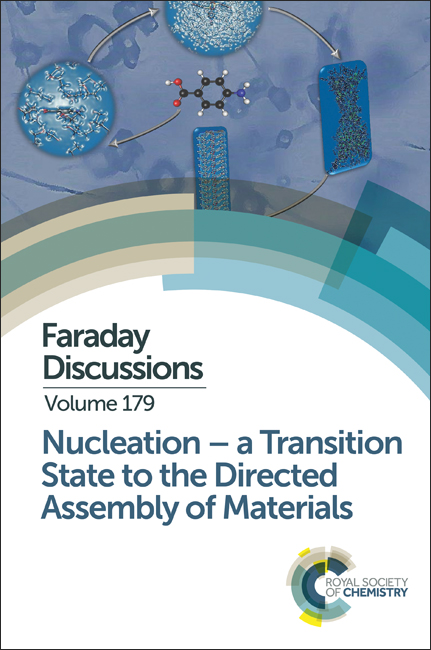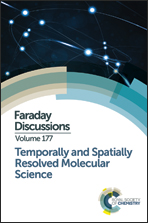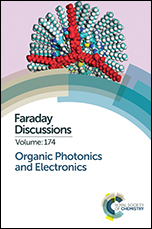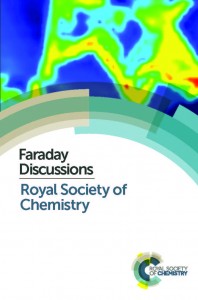i
We hope you will be able to join us for the Faraday Discussions meeting on Liquid Salts for Energy and Materials taking place in Ningbo, China from 11–13 May, 2016 which will cover the following themes:
- Benefits to energy efficiency and environmental impact
- Improvements of energy conversion and storage
- Developments for nuclear reactors and spent fuels processing
- Advancement in knowledge of phenomena and processes
The papers presented and a record of the discussions at the meeting will be published in the corresponding volume of Faraday Discussions.
We are pleased to announce the oral/paper abstract deadline is now 7 September 2015.
i
Submit your abstract today!
i
You can find more details on our website about what makes Faraday Discussions different from other meetings.
Check out these recent reviews and original research articles in the area of liquid salts for energy and materials from a selection of Royal Society of Chemistry journals:
Ionic liquids for energy, materials, and medicine
M. Smiglak, J. M. Pringle, X. Lu, L. Han, S. Zhang, H. Gao, D. R. MacFarlane and R. D. Rogers
Chem. Commun., 2014, 50, 9228-9250
DOI: 10.1039/C4CC02021A
Non-aqueous electrolytes for sodium-ion batteries
A. Ponrouch, D. Monti, A. Boschin, B. Steen, P. Johansson and M. R. Palacín
J. Mater. Chem. A, 2015, 3, 22-42
DOI: 10.1039/C4TA04428B
Ionic liquid based EDLCs: influence of carbon porosity on electrochemical performance
Asa Noofeli, Peter J. Hall and Anthony J. R. Rennie
Faraday Discuss., 2014, 172, 163-177
DOI: 10.1039/C4FD00057A
Activation of CO2 by ionic liquid EMIM–BF4 in the electrochemical system: a theoretical study
Yuanqing Wang, Makoto Hatakeyama, Koji Ogata, Masamitsu Wakabayashi, Fangming Jin and Shinichiro Nakamura
Phys. Chem. Chem. Phys., 2015, Advance Article
DOI: 10.1039/C5CP02008E
Physical properties of high Li-ion content N-propyl-N-methylpyrrolidinium bis(fluorosulfonyl)imide based ionic liquid electrolytes
Hyungook Yoon, Adam S. Best, Maria Forsyth, Douglas R. MacFarlane and Patrick C. Howlett
Phys. Chem. Chem. Phys., 2015, 17, 4656-4663
DOI: 10.1039/C4CP05333H
Preparation of nanodiamonds from carbon nanoparticles at atmospheric pressure
Ali Reza Kamali and Derek J. Fray
Chem. Commun., 2015, 51, 5594-5597
DOI: 10.1039/C5CC00233H
A novel recovery process for lipids from microalgæ for biodiesel production using a hydrated phosphonium ionic liquid
Magdalena Olkiewicz, Martin P. Caporgno, Josep Font, Jack Legrand, Olivier Lepine, Natalia V. Plechkova, Jeremy Pruvost, Kenneth R. Seddon and Christophe Bengoa
Green Chem., 2015, 17, 2813-2824
DOI: 10.1039/C4GC02448F
Electrical conductivity in two mixed-valence liquids
Wenzhi Yao, Steven P. Kelley, Robin D. Rogers and Thomas P. Vaid
Phys. Chem. Chem. Phys., 2015, 17, 14107-14114
DOI: 10.1039/C5CP01172H
Ionic liquids in the electrochemical valorisation of CO2
Manuel Alvarez-Guerra, Jonathan Albo, Enrique Alvarez-Guerra and Angel Irabien
Energy Environ. Sci., 2015, Advance Article
DOI: 10.1039/C5EE01486G
Computer simulations of ionic liquids at electrochemical interfaces
Céline Merlet, Benjamin Rotenberg, Paul A. Madden and Mathieu Salanne
Phys. Chem. Chem. Phys., 2013, 15, 15781-15792
DOI: 10.1039/C3CP52088A




















